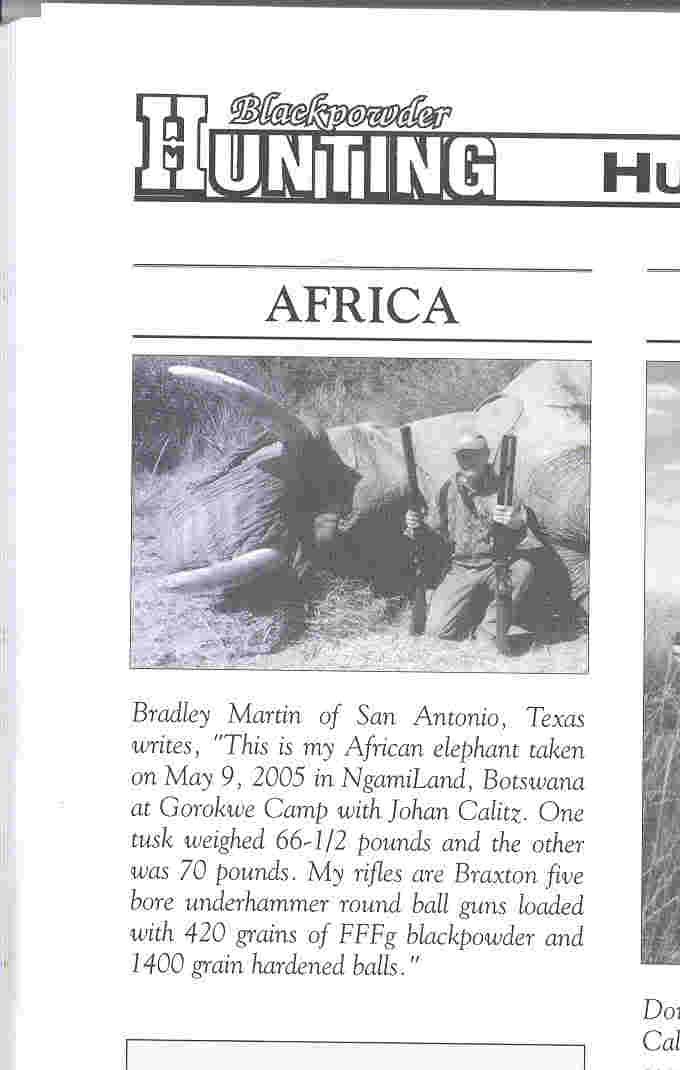I'm not arguing "in favor" of conicals, just pointing out some of the physical limitations of roundballs. If you want to bring down bigger game you need a bigger bore, unless you are willing to shoot a longer bullet.
Those aren't really the issue. I'd be comfortable taking moose at woods ranges with a .54, no question. I've seen them taken with a 7.62x39. They aren't hard to kill. Neither are caribou. I don't know much about elk but I believe a great many have been taken with .50 and .54 roundball.
The problem comes when you are also dealing with ursus arctos horribilis and his larger coastal brothers. The historical track-record of standard .50 and .54 cal roundball against him has NOT been good. Hunters do take the big bear with .54's, but you'd be crazy to try it with roundball. A heavy conical is the standard for that caliber.
Alternately, you could get a large bore roundball shooter. A ball in the .69" range or larger should be packing enough mass to give you the needed penetration.
Absolutely. But as old Elmer Keith advised, when you are using a single shot firearm you ought to err on the size of a larger round because that first shot HAS to do your work and do it well.
I'm not saying everyone should use modern conicals. I'm saying for hunting up here the traditional paradigm for roundball shooting needs to be adjusted up. Either that or you have to take multiple long guns.
Furthermore, there are a great many varieties of TRADITIONAL 19th century conical. The Civil War battlefields are filled with an astonishing array of variations, as you can see from any bullet collector's display. Including towers, "fat boys," "slug ball," picket bullets, garabaldi, Shaler three part, and of course the Minie. The ball-ettes that a lot of folk like are very similar to a number of these historically correct rounds. But for some reason "traditional" ML'ing for many religiously excludes any projectile save patched round ball.
Elk, Moose, Caribou, and other ungulates have all been killed with black powder propelled RBs.
Those aren't really the issue. I'd be comfortable taking moose at woods ranges with a .54, no question. I've seen them taken with a 7.62x39. They aren't hard to kill. Neither are caribou. I don't know much about elk but I believe a great many have been taken with .50 and .54 roundball.
The problem comes when you are also dealing with ursus arctos horribilis and his larger coastal brothers. The historical track-record of standard .50 and .54 cal roundball against him has NOT been good. Hunters do take the big bear with .54's, but you'd be crazy to try it with roundball. A heavy conical is the standard for that caliber.
Alternately, you could get a large bore roundball shooter. A ball in the .69" range or larger should be packing enough mass to give you the needed penetration.
Hunting with a single shot firearm has always been, and will always be, an event that focuses on the ACCURATE PLACEMENT of your RB( or bullet), Rather than just blasting away.
Absolutely. But as old Elmer Keith advised, when you are using a single shot firearm you ought to err on the size of a larger round because that first shot HAS to do your work and do it well.
I'm not saying everyone should use modern conicals. I'm saying for hunting up here the traditional paradigm for roundball shooting needs to be adjusted up. Either that or you have to take multiple long guns.
Furthermore, there are a great many varieties of TRADITIONAL 19th century conical. The Civil War battlefields are filled with an astonishing array of variations, as you can see from any bullet collector's display. Including towers, "fat boys," "slug ball," picket bullets, garabaldi, Shaler three part, and of course the Minie. The ball-ettes that a lot of folk like are very similar to a number of these historically correct rounds. But for some reason "traditional" ML'ing for many religiously excludes any projectile save patched round ball.







